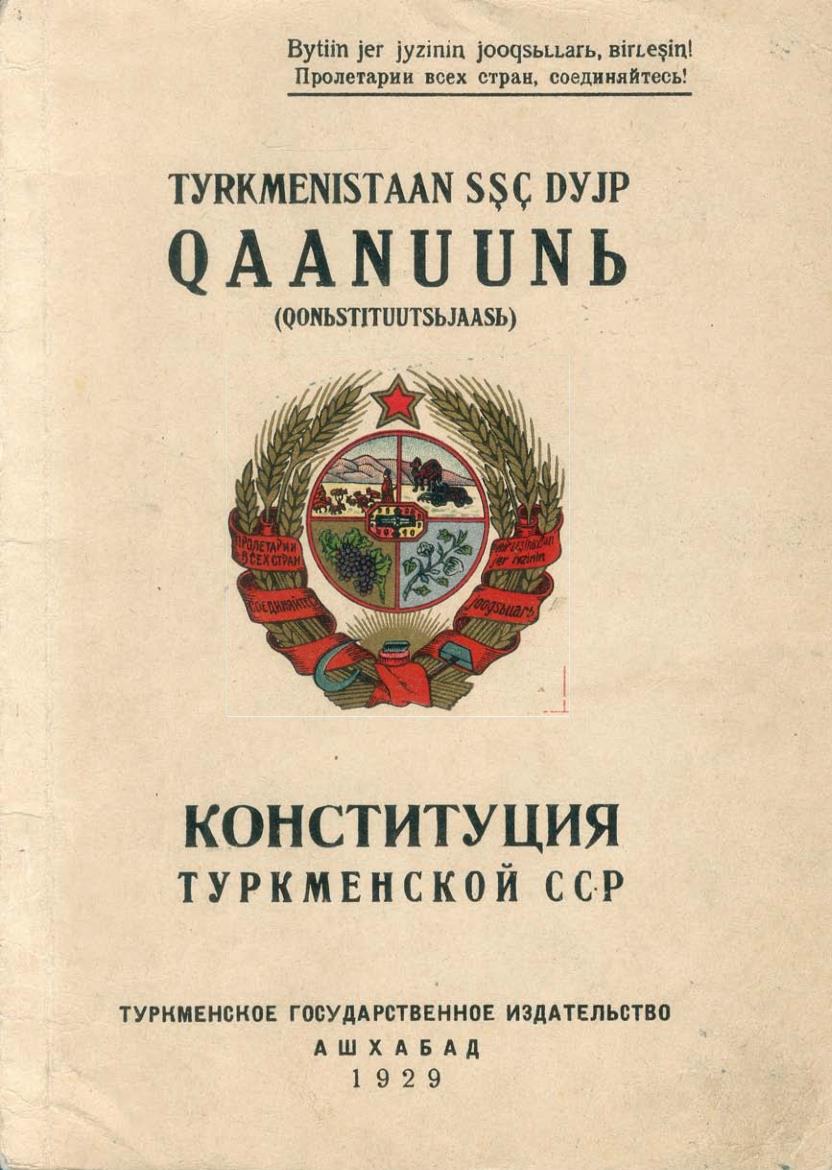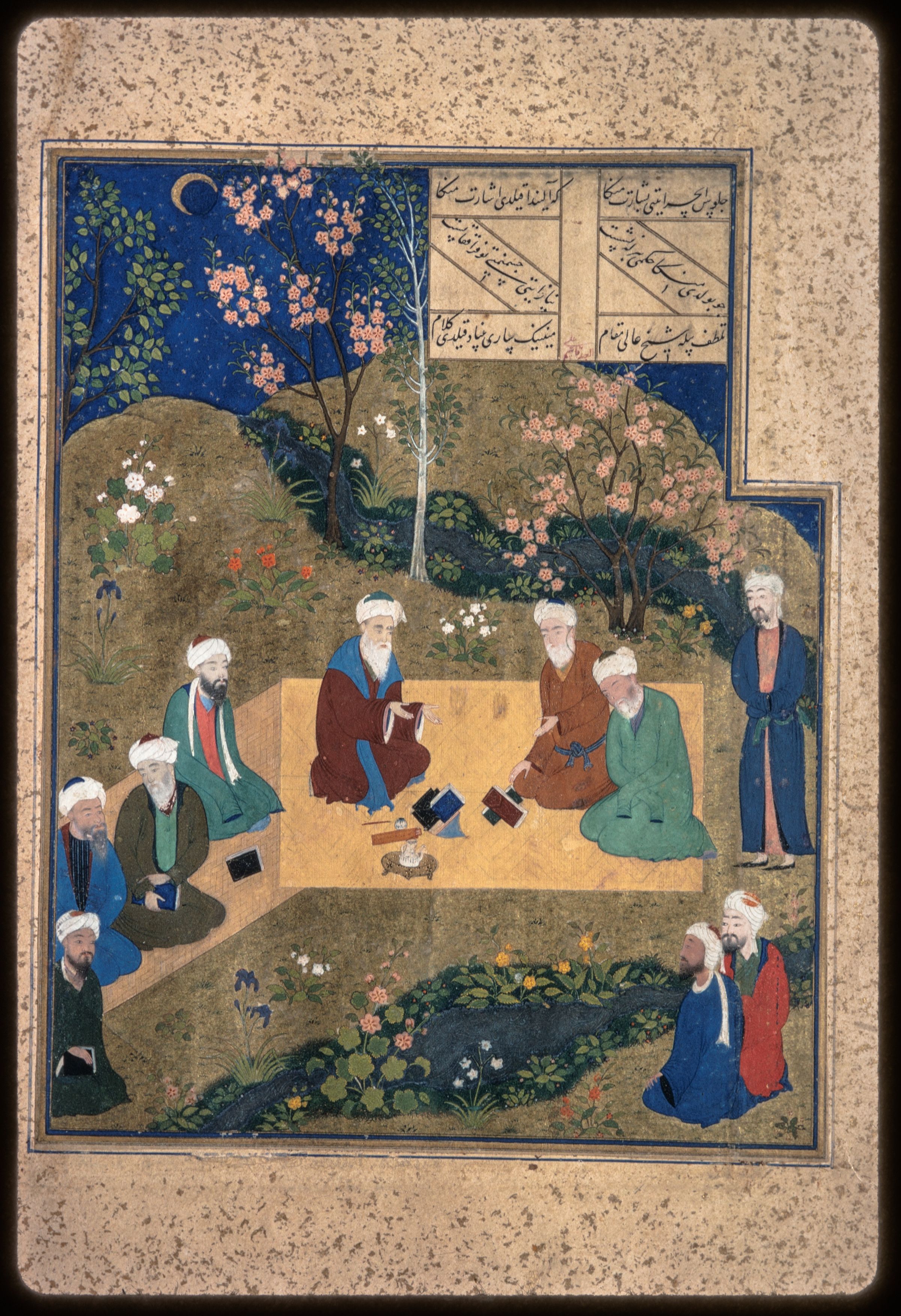|
Supreme Court Of Turkmenistan
The Supreme Court of Turkmenistan () is a constitutional institution in Turkmenistan. It is one of three Turkmen institutions to exercise governmental power and is the highest ranking court in the country. Established in 1992 after the adoption of the Constitution of Turkmenistan, the Supreme Court currently consists of 22 judges who are appointed by the President of Turkmenistan for a 5-year term. It is the successor to the Supreme Court of the Turkmen SSR. The associate judges are divided into three different chambers, each specifically focusing on civil, criminal, and military law. The Supreme Court is affiliated to different regional munincipal, provincial courts, district and city courts, as well as the Supreme Economic Court. The main tasks of the court include interpreting the Constitution and reviewing the constitutionality any decision made by the Assembly of Turkmenistan. The Supreme Court of Turkmenistan has the ability to review appeals against court and arbitral award ... [...More Info...] [...Related Items...] OR: [Wikipedia] [Google] [Baidu] |
Turkmenistan
Turkmenistan ( or ; tk, Türkmenistan / Түркменистан, ) is a country located in Central Asia, bordered by Kazakhstan to the northwest, Uzbekistan to the north, east and northeast, Afghanistan to the southeast, Iran to the south and southwest and the Caspian Sea to the west. Ashgabat is the capital and largest city. The population is about 6 million, the lowest of the Central Asian republics, and Turkmenistan is one of the most sparsely populated nations in Asia. Turkmenistan has long served as a thoroughfare for other nations and cultures. Merv is one of the oldest oasis-cities in Central Asia, and was once the biggest city in the world. It was also one of the great cities of the Islamic world and an important stop on the Silk Road. Annexed by the Russian Empire in 1881, Turkmenistan figured prominently in the anti-Bolshevik movement in Central Asia. In 1925, Turkmenistan became a constituent republic of the Soviet Union, the Turkmen Soviet Socialist Repu ... [...More Info...] [...Related Items...] OR: [Wikipedia] [Google] [Baidu] |
Constitution Of Turkmenistan
The Constitution of Turkmenistan adopted on 18 May 1992 is the supreme law of Turkmenistan (Article 5). In its preamble, the Constitution emphasizes self-determination for the Turkmen people, as well as the rule of law and rights for citizens. (''See also Human rights in Turkmenistan''). The 1992 constitution was amended in 1995, 1999, 2003 and 2006. It was amended on 26 September 2008, abolishing the 2,500-member People's Council () and expanding the elected Assembly () from 65 to 125 members. A new constitution was adopted on 14 September, 2016. State Flag and Constitution Day is celebrated on 18 May. Constitution of the Turkmen SSR There were three Constitutions of the Turkmen Soviet Socialist Republic, enacted in 1927, 1937, and 1978. The last was superseded by the modern Constitution of Turkmenistan, which came into force in 1992. It has since been amended in 2008 and 2016. Overview Section 1 Section 1 of the 2008 Constitution is composed of 17 articles (15 articles i ... [...More Info...] [...Related Items...] OR: [Wikipedia] [Google] [Baidu] |
President Of Turkmenistan
The president of Turkmenistan ( tk, Türkmenistanyň prezidenti), officially the president and chairman of the Cabinet of Ministers of Turkmenistan, is the head of state and head of government of Turkmenistan. The president is also the supreme commander in chief of the Armed Forces of Turkmenistan and heads the State Security Council. Serdar Berdimuhamedow is the current president of Turkmenistan, the third in the history of the country since it gained independence with the dissolution of the Soviet Union in 1991. He succeeded his father, Gurbanguly Berdimuhamedow when the latter stepped down in 2022 after a reign of 15 years, the first president to do so. In the 2022 election, Berdimuhamedow received 72.97% of the country's popular vote against nine other candidates. The country passed reforms in 2016 eliminating term limits for the presidency and removing the previous age requirement of below 70, as well as extending the term from five to seven years. Requirements for presi ... [...More Info...] [...Related Items...] OR: [Wikipedia] [Google] [Baidu] |
Turkmen SSR
Turkmen, Türkmen, Turkoman, or Turkman may refer to: Peoples Historical ethnonym * Turkoman (ethnonym), ethnonym used for the Oghuz Turks during the Middle Ages Ethnic groups * Turkmen in Anatolia and the Levant (Seljuk and Ottoman-Turkish descendants): ** Iraqi Turkmen, a Turkish minority living mostly in the Turkmeneli region in northern Iraq ** Turks in Israel, a Turkish minority living in Israel ** Turks in Lebanon, a Turkish minority living in Lebanon ** Syrian Turkmen, a Turkish minority living mostly in northern Syria ** Yörüks, a semi-nomadic group in Anatolia often referred to as Turkmen in Turkey ** Anatolian beyliks, small principalities in Anatolia governed by Beys, late 11th–13th centuries * Turkmens, a Turkic people native to Central Asia living primarily in Turkmenistan and North Caucasus ** Iranian Turkmens, Turkmen minority living in Iran ** Afghan Turkmens, Turkmen minority living in Afghanistan ** Turkmen in Pakistan, mostly Turkmen refugees from Afgha ... [...More Info...] [...Related Items...] OR: [Wikipedia] [Google] [Baidu] |
Assembly Of Turkmenistan
The Assembly ( tk, Mejlis) is since March 2021 the lower house of the National Council of Turkmenistan. It has 125 members, elected for five-year terms in single-seat constituencies. Structure In addition to the chairperson and deputy chairperson, the Mejlis is organized into committees, which include: Protection of human rights and freedoms;Regulation;Science, education, culture and youth policy;Economic issues;Social policy;International and inter-parliamentary relations;Environmental protection, nature use and agro-industrial complex;Working with local representative authorities and self-governing bodies. History Originally, it shared power with the People's Council. Since 2018, the People's Council has been restored as a parliamentary body, an arrangement that was formalized in 2020. A 2003 law reduced the power of the Assembly and augmented that of the People's Council. This meant that until 2008 the Assembly could be legally dissolved by the People's Council, was led ... [...More Info...] [...Related Items...] OR: [Wikipedia] [Google] [Baidu] |
Presidium
A presidium or praesidium is a council of executive officers in some political assemblies that collectively administers its business, either alongside an individual president or in place of one. Communist states In Communist states the presidium is the permanent committee of the legislative body, such as the Supreme Soviet in the USSR. The Presidium of the Supreme Soviet existed after 1936, when the Supreme Soviet of the USSR supplanted the Congress of Soviets of the USSR, as a replacement for the Central Executive Committee which was headed by "the Presidium of the Central Executive Committee". In its place was the Presidium of the Supreme Soviet alone, no Central Executive Committee, and from 1938 to 1989, the Chairman of the Presidium of the Supreme Soviet was the formal title of the head of state of the USSR until the office of Chairman of the Supreme Soviet was introduced in 1989, later to be replaced by the President of the Soviet Union in March 1990. The Republics of ... [...More Info...] [...Related Items...] OR: [Wikipedia] [Google] [Baidu] |
Arbitration
Arbitration is a form of alternative dispute resolution (ADR) that resolves disputes outside the judiciary courts. The dispute will be decided by one or more persons (the 'arbitrators', 'arbiters' or 'arbitral tribunal'), which renders the 'arbitration award'. An arbitration decision or award is legally binding on both sides and enforceable in the courts, unless all parties stipulate that the arbitration process and decision are non-binding. Arbitration is often used for the resolution of commercial disputes, particularly in the context of international commercial transactions. In certain countries such as the United States, arbitration is also frequently employed in consumer and employment matters, where arbitration may be mandated by the terms of employment or commercial contracts and may include a waiver of the right to bring a class action claim. Mandatory consumer and employment arbitration should be distinguished from consensual arbitration, particularly commercial ... [...More Info...] [...Related Items...] OR: [Wikipedia] [Google] [Baidu] |
Ali-Shir Nava'i
'Ali-Shir Nava'i (9 February 1441 – 3 January 1501), also known as Nizām-al-Din ʿAli-Shir Herawī ( Chagatai: نظام الدین علی شیر نوایی, fa, نظامالدین علیشیر نوایی) was a Timurid poet, writer, statesman, linguist, Hanafi Maturidi mystic and painter who was the greatest representative of Chagatai literature. Nava'i believed that his native Chagatai Turkic language was superior to Persian for literary purposes, an uncommon view at the time and defended this belief in his work titled ''Muhakamat al-Lughatayn'' (''The Comparison of the Two Languages''). He emphasized his belief in the richness, precision and malleability of Turkic vocabulary as opposed to Persian. Because of his distinguished Chagatai language poetry, Nava'i is considered by many throughout the Turkic-speaking world to be the founder of early Turkic literature. Many places and institutions in Central Asia are named after him. Life Alisher Nava'i was born in ... [...More Info...] [...Related Items...] OR: [Wikipedia] [Google] [Baidu] |
Ashgabat
Ashgabat or Asgabat ( tk, Aşgabat, ; fa, عشقآباد, translit='Ešqābād, formerly named Poltoratsk ( rus, Полтора́цк, p=pəltɐˈratsk) between 1919 and 1927), is the capital and the largest city of Turkmenistan. It lies between the Karakum Desert and the Kopetdag mountain range in Central Asia, near the Iran-Turkmenistan border. The city was founded in 1881 on the basis of an Ahal Teke tribal village, and made the capital of the Turkmen Soviet Socialist Republic in 1924. Much of the city was destroyed by the 1948 Ashgabat earthquake, but has since been extensively rebuilt under the rule of Saparmurat Niyazov's "White City" urban renewal project, resulting in monumental projects sheathed in costly white marble. The Soviet-era Karakum Canal runs through the city, carrying waters from the Amu Darya from east to west. Since 2019, the city has been recognized as having one of the highest costs of living in the world largely due to Turkmenistan's inflation ... [...More Info...] [...Related Items...] OR: [Wikipedia] [Google] [Baidu] |
Government Of Turkmenistan
The politics of Turkmenistan takes place in the framework of a presidential republic, whereby the President of Turkmenistan is both head of state and head of government. However, no true opposition parties are allowed; every registered political party supports the third and current President Serdar Berdimuhamedow. The country is frequently described as a totalitarian state. Political background After 69 years as part of the Soviet Union (including 67 years as a union republic), Turkmenistan declared its independence on 27 October 1991. President for life Saparmurat Niyazov, a former bureaucrat of the Communist Party of the Soviet Union, ruled Turkmenistan from 1985, when he became head of the Communist Party of the Turkmen SSR, until his death in 2006. He ruled with totalitarian control over the country after the dissolution of the Soviet Union. On 28 December 1999 the Mejlis (parliament) declared Niyazov President for Life. (The Mejlis itself had taken office only a week e ... [...More Info...] [...Related Items...] OR: [Wikipedia] [Google] [Baidu] |
Constitutional Courts
A constitutional court is a high court that deals primarily with constitutional law. Its main authority is to rule on whether laws that are challenged are in fact unconstitutional, i.e. whether they conflict with constitutionally established rules, rights, and freedoms, among other things. In 1919 the First Austrian Republic established the first dedicated constitutional court, the Constitutional Court of Austria, which however existed in name only until 10 October 1920, when the country's new constitution came into effect, upon which the court gained the power to review the laws of Austria's federal states. The 1920 Constitution of Czechoslovakia, which came into effect on 2 February 1920, was the first to provide for a dedicated court for judicial review of parliamentary laws, but the court did not convene until November 1921. The organization and competences of both courts were influenced by constitutional theories of Hans Kelsen. Subsequently, this idea of having a ... [...More Info...] [...Related Items...] OR: [Wikipedia] [Google] [Baidu] |

.jpg)


